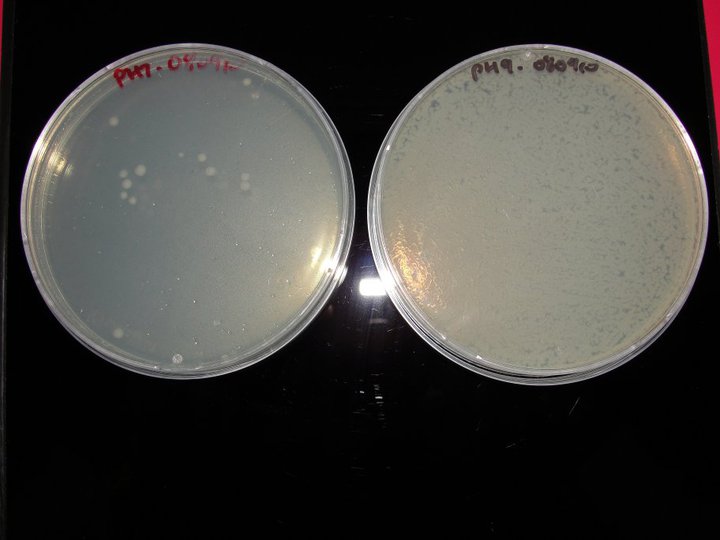Team:Newcastle/solution
From 2010.igem.org
Revision as of 00:40, 22 October 2010 by RachelBoyd (Talk | contribs)

| |||||||||||||
| |||||||||||||
Contents |
Overview
...
Parts Submitted to the Registry
- CaCO3/Urease
- Filamentous cells
- End of crack & signalling system
- Swarming
- Non-target-environment kill switch
- Glue
Alkalinity resistance
Our chassis, Bacillus subtilis 168, can be acclimatised to the high pH of concrete (which can be as high as pH 10). Below on the left you can see Bacillus subtilis 168 which was grown under normal conditions and then transferred to pH 10. On the right is Bacillus subtilis 168 which has been acclimatised to high pH before being transferred to pH 10, and has a much higher rate of survival.
....link to the lab book experiments.
Initial Research
| Research |
| Initial Research on Filamentous cells |
An e-Science Approach to Synthetic Biology
We investigate the benefits of an e-Science approach, with a focus on workflows, to synthetic biology.
 
|
 "
"
